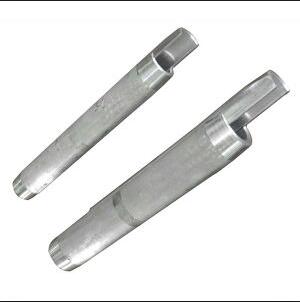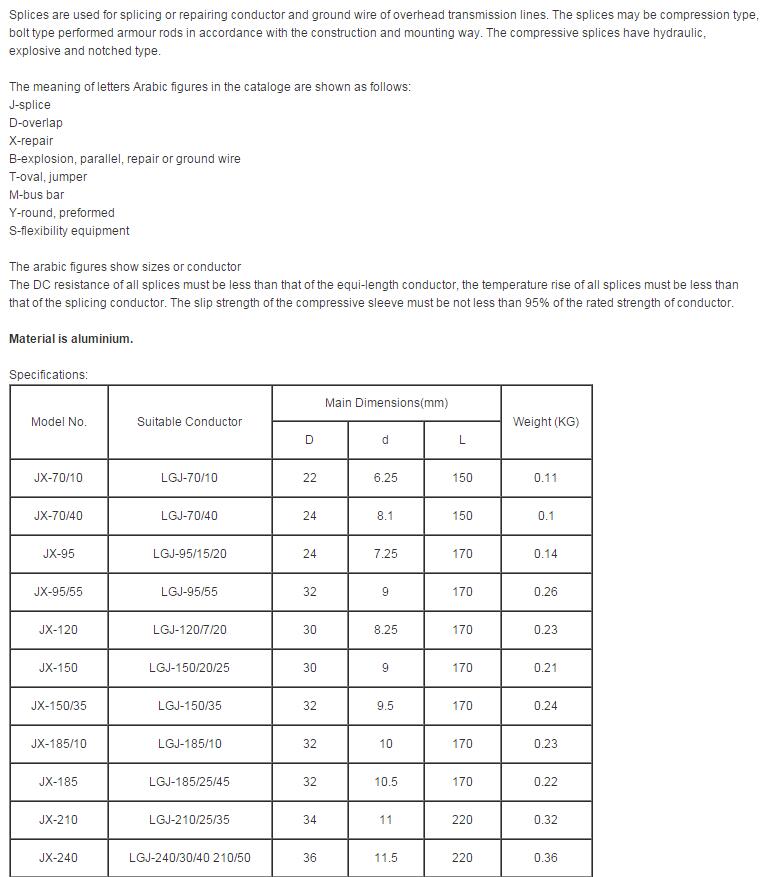In 2008, along with the global economic crisis, the Chinese economy also experienced fluctuations. The national economic policy has been frequently adjusted. From the "one defense and one insurance policy" in the first half of the year to the "positive fiscal policy and sound monetary policy" that is now implemented, the economy is stimulated by "guaranteeing growth, promoting domestic demand, and adjusting structure." At the same time, the central bank also repeatedly lowered the deposit reserve ratio and the benchmark interest rate of RMB deposits and loans to actively respond to the economic winter. The new labor contract law and the new implementation rules implemented since 2008 have increased the labor cost of enterprises by 30% to 40%. In the current economic situation, enterprises are more passive, and the roundabout is more difficult. Experienced a roller coaster-like adjustment. China's machine tool industry has entered an adjustment period after nearly eight years of continuous prosperity. In the past, users chased after the demand for goods, and the delivery period was delayed. Instead, some enterprises began to rotate, layoffs and even bankruptcy. The company began to actively seek customers and return to the normal business operation mode.
Current situation
How to judge the current and future development situation, the company has no bottom. The reason is that the situation of the machine tool industry has changed rapidly. Some enterprises also said that they were not affected much in September. However, in October, they obviously felt the pressure of order reduction and inventory increase. Secondly, they did not know the economic fluctuations. How long will it last? Will it repeat the mistakes of around 1992? Therefore, there are various speculations in the industry. However, as a company, the most important thing at this time is to calm down the mentality, practice hard work, and not blindly follow.
From the situation in 2008, the figures of the machine tool industry in October are difficult to read. (Reporter: According to the data obtained from the China Machinery Industry Federation, in October 2008, the output of metal cutting machine tools and metal forming machine tools showed a downward trend year-on-year. It decreased by 9.22% and 9.62% respectively, of which the output of CNC metal cutting machine decreased greatly in the month, down 12.85% year-on-year. In November, metal cutting machine tools and metal forming machine tools all showed a downward trend, down 19.72% and 16.76% respectively. In October, the growth rate slowed down by 10.5 and 7.14 percentage points. Among them, the output of CNC metal cutting machine saw a large decline in the month, down 34.43% year-on-year. Not only the machine tool, but also the number of the automobile industry is not optimistic. When talking with the person in charge of an exhibition in Guangzhou, the person in charge said that in September, the company still called to participate in the exhibition, and in October, they called to retire. At the same time, some companies also began to cancel user orders in October, the decline in exports and the increase in inventory, so is the inflection point starting from October?
actually not. The machine tool industry is a fundamental industry, and any industry must provide equipment directly or indirectly from the machine tool industry. When the young industry in the first half of 2008 experienced a recession, it was actually an early warning to the machine tool industry. In contrast, around the year of 1992, the turning point in the light industry was half a year earlier than the machine tool industry, while the heavy-duty machine tools showed an inflection point in a year or so. Facts have proved that analyzing the supply and demand relationship of the industrial chain, the more mature the market economy, the more regular the internal demand is, so the mutual influence should be a mutual warning. In 2008, the situation also seemed to have met, and ordinary machine tools even showed an increase in inventory in July and August. Faced with the introduction of a series of national policies, the machine tool industry should take countermeasures as soon as possible to speed up product adjustment and transformation. Otherwise, large and heavy-duty machine tools will also be affected.
The factors that have contributed to the decline of the machine tool industry are as follows:
(1) The impact of related industries in the industrial sector? The relationship between related industries and machine tool industry in the industrial sector forms an indirect industrial chain. The development and fluctuation of these industries have a certain lag on the impact of the machine tool industry. Such mutual relations should be mutually early warning. For example, from the impact on the machine tool industry, not only depends on the situation of textile machinery, but more importantly, it is necessary to see the development of the textile industry; the steel industry is also the same. In 2005, the steel industry developed rapidly, driving the machine tool industry to provide 7% of sales in the year fell to 4% in 2007, and by January to July 2008, this figure was only 2.6%. At the same time, the price of steel products has some impact on the machine tool industry, but it is not particularly large, especially after the development of CNC machine tools, the impact will be even smaller.
(2) Impacts in the machinery industry? The impact of the industry in the same machinery industry on machine tools is direct and rapid. These industries are either direct users of the machine tool industry, such as power generation equipment, or interact with the machine tool industry, causing mutual influence, such as bearings and basic parts. In the case of the hydraulics industry, in the case of 2008, in addition to construction machinery, other industries have experienced different degrees of decline.
(3) Influencing factors within the machine tool industry? In the second half of 2008, a large part of the decline in the machine tool industry was its own factor, which is the internal problem of the machine tool industry. The global economic crisis is only a fuse at best, and its influence is limited. China's machine tool industry is too slow to adjust, and adjustment is mainly in three aspects: product, industry and organizational structure.
From the product point of view, China's current division method is to divide the machine tool into three types: ordinary type, medium and low grade type and large precision type. A few years ago, both the federation and the association were calling for upgrading the product structure to occupy the high-end CNC machine tool market. However, when the situation is very good, the heads of the company are often hot-headed and tend to be large-scale, and the result is missing. Great opportunity for upgrading product structure (Reporter: It was at this meeting in 2007 that under the great situation at that time, President Yang once asserted that the machine tool industry did not seize the opportunity of rapid development in recent years). "A cake, when you are bigger, you can eat it; if you have the same size, you can eat more if you eat more; just eat the cream above, not only can you eat, but also eat well!" In 2008, the machine tool industry The situation is a good proof of its correctness. Once the economy declines, ordinary machine tools bear the brunt and become the most affected products. The medium and low-end CNC machine tools have also been affected since September, while the demand for heavy, precision and high-end CNC machine tools is stable. Basically unaffected. Ordinary machine tools and low-end CNC machine tools are relatively labor-intensive products. With the development of China's economy, its demand and supply are increasingly unbalanced, and it is a matter of course. At present, the country has issued a large number of policies, such as 4 trillion investment and export tax rebates. At the same time, the technical transformation proposed by the Ministry of Industry and Information Technology will directly or indirectly drive the machine tool industry in China, but the size of the promotion depends on the size of the promotion. Adjustments in the industry. If the machine tool industry can't make adjustments as soon as possible and make a difference in the high-end field, then these policies will undoubtedly be "making clothes for others."
From the perspective of industrial organization, the uncoordinated development of mainframes and functional components in recent years has become an obstacle to the healthy and rapid development of the machine tool industry. From the current industry perspective, China's functional component industry has a single product, and only a few in China are Known by the ball screw, the tool magazine is imported from Taiwan, and the high-end technology products such as the linear motor industry are simply not available. The technology-intensive functional components are developing too slowly. The sophisticated high-end mainframe industry is improved by functional components. Without the developed functional component industry, the development of the mainframe is coming! The functional component industry should increase research and development efforts and produce new products. At the same time, the host industry's distrust of domestically produced functional components has also affected the development of the industry to a certain extent.
From the perspective of organizational structure and business philosophy, there is a need for further improvement. The technical standards and testing methods of the machine tool industry are backward. Most of them are the products of “takenism†and cannot keep up with the development of the industry. For example, the reliability of machine tools, the reliability of foreign machine tools can reach 1500 ~ 2000h, and some can even reach 5000h, while the domestic machine tools can only reach hundreds of hours, is the standard is not uniform, or the fact gap is so large, no institutions Relevant standards have been issued for certification; similar problems exist in the CNC system industry. For example, modern production puts demands on the environment and ecology, especially when exporting products to countries with high environmental protection standards such as Europe and the United States, whether emissions, painting, etc. are environmentally friendly, when China’s product functions are close to those of developed countries. These "green barriers" are likely to emerge (Reporter: These problems have appeared many times in other industries and should be vigilant), especially those with relatively large exports should take these issues seriously. In a recent spot check, the Federation did find that some of these machines have these problems, and this requires advance countermeasures.
From the business philosophy, the strategic relationship of "user is God" must be squared! When the market is hot, due to the lack of long-term strategic considerations, it is often reckless to take orders, blindly expand the scale, only pay attention to the growth of quantity, and ignore the qualitative improvement! The direct impact is that the delivery period is delayed, the reliability of the product is declining, the follow-up service is not in place, and even the customer is required to be price. In the volatility period of the industry, as the demand for low-end products declines, enterprises will fall into the winter and even go bankrupt. In addition, in the business philosophy of products, foreign countries have already broken through the simple way of providing products, but in the form of “turnkeyâ€, “complete engineering†and “system solutionsâ€, the focus is no longer on their own. The starting point of the product is to start with the customer's requirements, to match the user's products, to highlight the service concept, and to be the "master craftsman" of the customer. For the domestic machine tool industry, the starting point of business operations and the transformation of entry points are crucial!
(4) The impact of exports on the machine tool industry? On the whole, in China's machine tool industry, exports account for a small proportion, so the direct impact of export decline on the industry is not particularly large, but the decline in the country's overall export volume has a greater impact on the machine tool industry, especially industrial The export of goods. According to the data, 35% of China's total economic output is achieved by exports, while exports since 2008 have fallen by 35%. One obvious change is the decline in the volume of trade in Canton Fair in 2008. The impact of the decline in exports on the machine tool industry is mainly reflected in the mold. The application of molds is wide, the industrial area driven by the mold is large, and the mold industry is affected. The machine tool industry is bound to be unable to protect itself. In 2002, the output value of molds in Zhejiang-Jiuyu-Yuyao and Huangyan reached 16 billion yuan, and the output value of the corresponding machine tools reached 630 million yuan. In the second half of 2007, due to the decline in exports, the values ​​of the two places dropped to 2.3 billion yuan and 6000 respectively. More than 10,000 yuan, close to "return to zero." In Chang'an Town of Guangdong Province, it is known for its precision molds. The output value has reached 4 billion yuan. This year, only 21 million yuan of equipment was purchased, which shows that the dependence of machine tools on exports is high.
Correctly estimate the response capabilities of machine tool companies themselves
(1) The new round of development of the machine tool industry since the end of the 20th century has greatly improved the industry's innovation ability, industry quality, economic ability and product level. It has already possessed a group of high-quality management talents. The development of competitive quality products and core technology development and application capabilities has made the industry's international competitiveness widely recognized, the crisis response ability has been strengthened, and the growth in the first 10 months of 2008 is good, all The annual statistics are estimated to reach double-digit growth. When the industry fell in around 1992, the situation was no longer the same, so it would not be as passive as it was around 1992, and it would fall into a large area of ​​losses. Of course, not all companies can withstand this economic shock, depending on the accumulation of technology, capital, and innovation in the high-speed growth of the past few years.
(2) Compared with the machine tool industry in 1992, today's enterprises have undergone qualitative changes in both the system and the mechanism. Among them, the three regions of Northeast China, Northwest China and Fujian-Zhejiang are the most representative. The machine tool industry in Northeast China has a long history and the best foundation. The current development is also the best. The region is mainly based on state-owned shares and is a “transformation systemâ€. In spite of the acquisition of private enterprises in the northwest region, The overall situation is "state-owned holding"; the machine tool industry in the 絓-Zhejiang region is dominated by private enterprises, so it is a "private system." It is precisely because of changes in the system and mechanism that the innovation, profitability and risk resistance of today's machine tool industry have been improved.
(3) The state pays more attention to the development of the machine tool industry. The series of policies promulgated by the state in recent years are obvious to all, from the return of value-added tax to the national medium- and long-term planning, from the frequent reports of the central media to the visits of national leaders. Both show the importance the country attaches to the machine tool industry; at the same time, the industry itself must also strengthen its propaganda, emphasizing the strategic position of the machine tool industry and striving for more support.
(4) Finally, the machine tool industry and enterprises should give more opinions and suggestions to the national and industry associations, especially those with strong operability. Especially in the current 2008 Central Economic Work Conference, after proposing “guaranteeing growth, expanding domestic demand, and adjusting structureâ€, the machine tool industry should pay more attention to it, and actively participate in the technical transformation proposed by the Ministry of Industry and Information Technology.
This economic fluctuation is actually not a bad thing. First of all, it can "squeeze water." The machine tool industry has developed rapidly in the past few years, so that even industry associations can't figure out how many machine tool companies there are. The crisis of the situation will inevitably eliminate a group of enterprises that are not competitive, and also enhance the innovation ability and technical level of the entire industry. Second, the crisis forced the industry to adjust. Despite the guidance of national policies and the support of industry associations, the adjustment of the machine tool industry still needs to be done internally. This crisis has enabled the entire industry to calm down and seriously consider the direction of the industry and prepare for the next economic peak. There are indeed many opportunities for overseas mergers and acquisitions under the current major crisis, but they must be carefully considered. At this point, the relative accuracy of the decision is high, and don't make big mistakes.
For the situation in 2009, the favorable factors are greater than the unfavorable factors. The world is saving the market, and the country is actively responding. Therefore, there are reasons to be optimistic. Of course, these are based on the confidence in the industry and the positive adjustment of the response. "Being in peace and in danger, thinking about change", I believe that in 2009 the industry will be warmer and hopeful!
Splices are used for splicing or repairing conductor and ground wire of overhead transmission lines. The splices may be compression type, bolt type performed armour rods in accordance with the construction and mounting way. The compressive splices have hydraulic, explosive and notched type.




If you have any questions, please contact with us directly.
Our company is solemnly committed to the majority of customers: reasonable price, short production cycle, considerate service. We look forward to cooperating with you.
Repair Sleeves,Aluminium Repair Sleeves,Splicing Fitting Repair Sleeves,Cable Repair Sleeves
Shandong Vantage International Trade Co., Ltd. , http://www.steelplate.be
